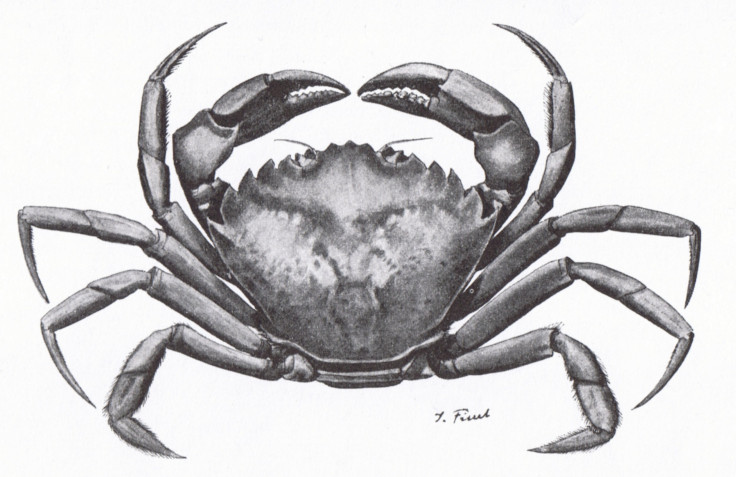Cannibal Crab Has Eating Superpower That Helps World Domination

A cannibal crab’s unusual superpower is helping it take over the world. Scientists claim the green shore crab can breathe in food through its gills so it can find something to eat even when there aren’t any other crabs around for it to cannibalize, making it a much more potent enemy to the rest of the creatures in the ocean.
The crab, whose scientific name is Carcinus maenas, is an invasive species that for decades has been moving into new coastal environments around the world and quickly dominating them. Now it seems that its gills, which also absorb oxygen, are involved in feeding, as well. In their experiments, the scientists found the green shore crab was able to take in a nutrient that was dissolved in the water around them, the amino acid leucine, according to their study in the journal Proceedings of the Royal Society B. It’s possible the crab is also able to suck in other nutrients through its gills.
These kinds of dissolved nutrients are common in marine environments and can represent a potentially important source of food for different species. However, scientists noted that this was the first time this process had been observed in crustaceans.
The research on the green shore crab took place in western Canada, but in other areas it is known by other names, including the "European green crab," or simply "green crab" or "shore crab." Despite the name, it is not entirely green — it can have brown, yellow, orange and red coloring, as well. According to the Washington state Department of Fish and Wildlife, it can be up to four inches long and wide. The department refers to the crab as “unwelcome” due to its invasive nature.
The crab originated along the Atlantic coasts of Europe and northern Africa but has spread all around the world, including to the Atlantic and Pacific coasts of North America, all the way to Japan and down to South Africa and Australia. Much of this territory expansion occurred in the 1800s and 1900s.
In addition to its newly discovered ability to absorb nutrients through its gills in times when food may be scarce, green shore crabs can survive in varied environments, from sandy beaches to rocky coastlines to tidal marshes, living in water with different levels of salinity and different temperatures — all of which make it easier for the crab to invade new territory and elbow out native species.
“In areas where the crab have been able to establish reproducing populations they have had dramatic impacts on other species, particularly smaller shore crab, clams, and small oysters,” the Department of Fish and Wildlife explained. “While the crab cannot crack the shell of a mature oyster, it can prey upon young oysters, and will dig down six inches to find clams to eat. One green crab can consume 40 half-inch clams a day, as well as other crabs its own size.”
But when those kinds of prey are not around, it looks like the crab has nutrient-packed water to fall back on.
“This type of crab is so readily adaptable to extremely harsh environments, and that’s why they’re everywhere,” researcher Tamzin Blewett said in a statement from the University of Alberta. “They’re super-tolerant to low oxygen levels and changes in salinity, and now we know they also have this ability to consume nutrients through their gills. This ability may come in handy between meals. This ability kind of makes them the superhero of the marine world — or supervillain, depending on your perspective.”
Scientists also noted that apart from the nutritional value, it’s possible that absorbing amino acids through its gills could be a way the crab neutralizes itself in environments with changing salt levels.


© Copyright IBTimes 2025. All rights reserved.





















